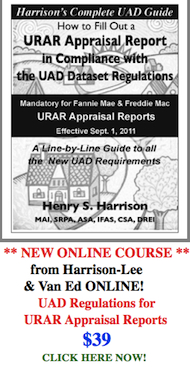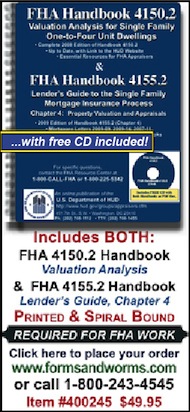Ask Henry
Dear H2,
On a current appraisal, after all adjustments are made in the sales comparison grid of the URAR, the end adjusted values are as follows: Comp1: $125,000 - Comp 2: $127,000 - Comp 3: $124,000. I am unable to accord weight to any one of the comparables and would like to give weight to all of them, using an average that is in the middle of the indicated value range ($124,000-$127,000). I would like to add all three indicated values, and divide by three (= $125,333 average) and then reconcile the values to be $125,000.
However, I’ve been told many times not to derive an opinion of value using a mathematical method such as this one. Yet I have seen a few appraisals of my peers that do use this method, where appropriate. Of course, I want to be in compliance with Fannie/Freddie and USPAP. What's your opinion?
Brooke
Dear Brooke,
If you are using a URAR form, the format calls for you to describe each comparable sale and then adjust it for any significant differences between it and the subject property. However, there is nothing in the USPAP that requires you to analyze comparables this way. In more complex appraisals (usually reported in a narrative appraisal report format), I have seen large sets of comparable data adjusted using averages. What you plan to do is fine, but the final value estimate of the subject should be based upon a reconciliation that, in your judgment considers everything about the subject, market and comparables that you think is significant.
The reason an "average" is not usually used by appraisers in the reconciliation process is that it is a statistical term that implies that you took a random sample of all the available comparable sales, and that the sample was large enough (usually a minimum random sample is at least 18 items). You would then also need to state if the average you obtained is the mean, median or mode.





















